Seven Impossible Interviews
Before Breakfast #69: Kadir Nelson
 March 17th, 2008 by jules
March 17th, 2008 by jules
 Ever seen the art in an illustrated book and cried? Not because the book is particularly sad in any way, but simply because the art is beautiful, the emotions evoked so stirring, and the creator so artistically accomplished? As melodramatic as it may sound, we here at 7-Imp have had experiences similar to that when looking upon the beautiful oil paintings of illustrator Kadir Nelson. Actually, you can make that “author-illustrator” now, since Kadir penned as well as illustrated his latest book — We Are the Ship: The Story of Negro League Baseball, just published in January by Hyperion/Jump at the Sun. As if his blazing talent with paint brushes weren’t enough, leaving us speechless at every turn . . . now he proves he’s got the writing chops as well.
Ever seen the art in an illustrated book and cried? Not because the book is particularly sad in any way, but simply because the art is beautiful, the emotions evoked so stirring, and the creator so artistically accomplished? As melodramatic as it may sound, we here at 7-Imp have had experiences similar to that when looking upon the beautiful oil paintings of illustrator Kadir Nelson. Actually, you can make that “author-illustrator” now, since Kadir penned as well as illustrated his latest book — We Are the Ship: The Story of Negro League Baseball, just published in January by Hyperion/Jump at the Sun. As if his blazing talent with paint brushes weren’t enough, leaving us speechless at every turn . . . now he proves he’s got the writing chops as well.
 We Are the Ship — a book which seemed to garner Caldecott 2009 buzz (at least in the kidlitosphere) as early as January and which has been called “sumptuous” (Publishers Weekly), “powerful” (Hall-of-Famer Hank Aaron), and “a triumph” (Betsy Bird) — tells the story of Negro League baseball from its beginnings in the 1920s through the decline after Jackie Robinson crossed over to the majors in 1947. Using an authentic “Everyman” player as his narrator, readers not only feel as if they are right there in the dug-out, but the technique also makes evident Nelson’s admiration and respect for the individual ballplayers featured in the book. Publishers Weekly wrote, “{u}sing a folksy vernacular, a fictional player gives an insider account of segregated baseball, explaining the aggressive style of play (‘Those fellows would bunt and run you to death. Drove pitchers crazy!’) and recalling favorite players.” The book’s title comes from Andrew “Rube” Foster (“{h}e knew baseball like the back of his black hand, and more important, he knew how to win,” Kadir writes), founder of the Negro National League and owner of the Chicago American Giants. On February 20, 1920 — when Rube called together all the owners of black baseball teams in the Midwest to create the Negro National League — he declared with pride, “we are the ship; all else the sea.” The Washington Post declared We Are the Ship their February 25, 2008, Book of the Week and wrote that Kadir “spent more than seven years researching, writing and illustrating this book. His effort shows on each page.” And, as Kadir himself puts it in a promotional video for the book (linked in the resource list below this interview), the stories of the individuals in We Are the Ship still manage to be universal ones.
We Are the Ship — a book which seemed to garner Caldecott 2009 buzz (at least in the kidlitosphere) as early as January and which has been called “sumptuous” (Publishers Weekly), “powerful” (Hall-of-Famer Hank Aaron), and “a triumph” (Betsy Bird) — tells the story of Negro League baseball from its beginnings in the 1920s through the decline after Jackie Robinson crossed over to the majors in 1947. Using an authentic “Everyman” player as his narrator, readers not only feel as if they are right there in the dug-out, but the technique also makes evident Nelson’s admiration and respect for the individual ballplayers featured in the book. Publishers Weekly wrote, “{u}sing a folksy vernacular, a fictional player gives an insider account of segregated baseball, explaining the aggressive style of play (‘Those fellows would bunt and run you to death. Drove pitchers crazy!’) and recalling favorite players.” The book’s title comes from Andrew “Rube” Foster (“{h}e knew baseball like the back of his black hand, and more important, he knew how to win,” Kadir writes), founder of the Negro National League and owner of the Chicago American Giants. On February 20, 1920 — when Rube called together all the owners of black baseball teams in the Midwest to create the Negro National League — he declared with pride, “we are the ship; all else the sea.” The Washington Post declared We Are the Ship their February 25, 2008, Book of the Week and wrote that Kadir “spent more than seven years researching, writing and illustrating this book. His effort shows on each page.” And, as Kadir himself puts it in a promotional video for the book (linked in the resource list below this interview), the stories of the individuals in We Are the Ship still manage to be universal ones.

Rube Foster and his Chicago American Giants, circa 1920
 And the illustrations? Brilliant. Richly-colored. Vivid. Detailed. As Betsy Bird put it in her review, Nelson “knows how to capture a person’s soul in a portrait.” Pictured here is the illustration featuring Jay Hanna “Dizzy” Dean and Satchel Paige, and here is an online gallery from Sports Illustrated’s recent feature on the book, showcasing many of Kadir’s gorgeous illustrations. The web site for the book has a fascinating “Making the Book” feature which describes the process Nelson underwent to create the stunning illustrations (and Nelson touches upon this a bit in the interview below as well):
And the illustrations? Brilliant. Richly-colored. Vivid. Detailed. As Betsy Bird put it in her review, Nelson “knows how to capture a person’s soul in a portrait.” Pictured here is the illustration featuring Jay Hanna “Dizzy” Dean and Satchel Paige, and here is an online gallery from Sports Illustrated’s recent feature on the book, showcasing many of Kadir’s gorgeous illustrations. The web site for the book has a fascinating “Making the Book” feature which describes the process Nelson underwent to create the stunning illustrations (and Nelson touches upon this a bit in the interview below as well):
“In order to create realistic portrayals of baseball players in action and repose, Nelson served as his own model for each painting, donning sharp suits and authentic replica uniforms while photographing himself posed as each player represented. Each painting had its own unique set of criteria and demanded individual attention to details and settings; i.e. historically accurate baseball uniform colors and styles, equipment, era costumes, pre and post Depression era city streets, streetcars and trains, sandlot baseball fields in small towns and grand baseball stadiums in big cities.”
 Kadir is no stranger to such approbation for his work. In a picture book illustration career that hasn’t quite spanned a full decade, he has established himself as a master of the medium. His debut, Brothers of the Knight (Dial, 1999) — an adaptation of a Grimm tale by choreographer/dancer/actress Debbie Allen — won immediate praise for his “fine line, minutely detailed characters and settings, and expressively lit coloration” (School Library Journal). His works have since illuminated the texts of such revered authors as Ann Grifalconi (The Village that Vanished, Dial 2002) and Nikki Grimes (Under the Christmas Tree, HarperCollins 2002). He’s illustrated the works of crossover-picture book authors Spike Lee (Please, Baby, Please, Simon & Schuster 2002, and Please, Puppy, Please, 2005) and Will Smith (Just the Two of Us, Scholastic 2001). And he’s pretty much the official illustrator for picture books about Michael Jordan (Salt in his Shoes, 2000, and Michael’s Golden Rules, 2007, both by Deloris Jordan and Roslyn M. Jordan, Simon & Schuster).
Kadir is no stranger to such approbation for his work. In a picture book illustration career that hasn’t quite spanned a full decade, he has established himself as a master of the medium. His debut, Brothers of the Knight (Dial, 1999) — an adaptation of a Grimm tale by choreographer/dancer/actress Debbie Allen — won immediate praise for his “fine line, minutely detailed characters and settings, and expressively lit coloration” (School Library Journal). His works have since illuminated the texts of such revered authors as Ann Grifalconi (The Village that Vanished, Dial 2002) and Nikki Grimes (Under the Christmas Tree, HarperCollins 2002). He’s illustrated the works of crossover-picture book authors Spike Lee (Please, Baby, Please, Simon & Schuster 2002, and Please, Puppy, Please, 2005) and Will Smith (Just the Two of Us, Scholastic 2001). And he’s pretty much the official illustrator for picture books about Michael Jordan (Salt in his Shoes, 2000, and Michael’s Golden Rules, 2007, both by Deloris Jordan and Roslyn M. Jordan, Simon & Schuster).
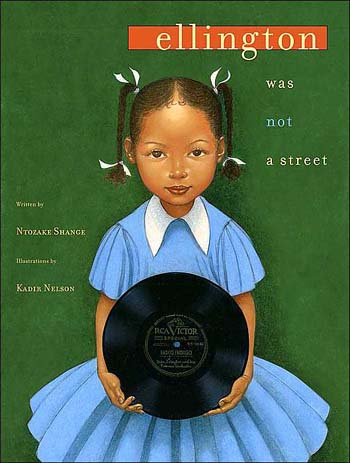 And awards? Oh, yeah. He’s got quite the shelfload. He’s received the Coretta Scott King Honor Award for Thunder Rose, a hilarious tall-tale about a super-strong little girl, penned by Jerdine Nolen (Silver Whistle, 2003). He’s won the actual Coretta Scott King Award twice: for the lovely, nostalgic Ellington Was Not a Street, a picture book adaptation of a poem by Nzotake Shange (Simon & Schuster, 2004), and again for the powerful biography Moses: When Harriet Tubman Led her People to Freedom by Carole Boston Weatherford (Jump at the Sun, 2006). Caldecott Honor Awards went to Moses and also to Henry’s Freedom Box by Ellen Levine (Scholastic 2007), a historical account of Henry Brown, a resourceful slave who literally mailed himself to freedom. He has also been recognized by the Society of Illustrators in New York and the NAACP with an Image Award.
And awards? Oh, yeah. He’s got quite the shelfload. He’s received the Coretta Scott King Honor Award for Thunder Rose, a hilarious tall-tale about a super-strong little girl, penned by Jerdine Nolen (Silver Whistle, 2003). He’s won the actual Coretta Scott King Award twice: for the lovely, nostalgic Ellington Was Not a Street, a picture book adaptation of a poem by Nzotake Shange (Simon & Schuster, 2004), and again for the powerful biography Moses: When Harriet Tubman Led her People to Freedom by Carole Boston Weatherford (Jump at the Sun, 2006). Caldecott Honor Awards went to Moses and also to Henry’s Freedom Box by Ellen Levine (Scholastic 2007), a historical account of Henry Brown, a resourceful slave who literally mailed himself to freedom. He has also been recognized by the Society of Illustrators in New York and the NAACP with an Image Award.
And lest you think he’s all about children’s books, he’s also an accomplished fine artist, whose work is exhibited in museums and collected by devoted fans. His commissioned works have appeared in publications like The New Yorker, Sports Illustrated, and Vibe. He also served as the lead conceptual artist for the films Amistad and Spirit: Stallion of the Cimarron.
We’re thrilled for this opportunity to get to know the uber-talented Mr. Nelson a bit better, and to share what we learned with you. We’re so very grateful that he was willing to take the time to talk to us, especially since his wife just had a baby and he’s understandably a le-e-e-e-ettle busy right now.
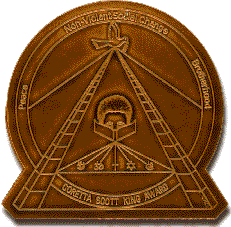 7-Imp: So, at this point you’ve got, what, two Coretta Scott King illustrator awards, one CSK honor award, two Caldecott honor awards (in sucessive years, we might add), even the NAACP Image Award. Is it still a rush when you get the phone call? Are you, by chance, consciously thinking about award possibilities when you illustrate now? Are there any awards or goals that you’re still shooting for?
7-Imp: So, at this point you’ve got, what, two Coretta Scott King illustrator awards, one CSK honor award, two Caldecott honor awards (in sucessive years, we might add), even the NAACP Image Award. Is it still a rush when you get the phone call? Are you, by chance, consciously thinking about award possibilities when you illustrate now? Are there any awards or goals that you’re still shooting for?
Kadir: It’s always a thrill to be honored in any way and I never take it for granted. I try to do my best work with each project. I don’t do what I do for the adulation. You can’t think that way. If you are thinking about getting an award for the work you are doing, you are not thinking about the work and it will suffer. You simply have to do your best work and be happy with that. Whatever follows after that is gravy.
 7-Imp: Is there a difference in how you approach your fine art, as opposed to illustration? Do you use different media or techniques? Does the inspiration come from a different source? {Pictured here is Day Dream, rendered in oil.}
7-Imp: Is there a difference in how you approach your fine art, as opposed to illustration? Do you use different media or techniques? Does the inspiration come from a different source? {Pictured here is Day Dream, rendered in oil.}
Kadir: Though the medium may sometimes be different, I approach each project with the same vigor. My personal work is a bit different because I’m solving my own challenges, rather than those of an author or an editor, but all creativity comes from the same place.
7-Imp: What exactly is your process when you are illustrating a book, particularly when it’s one you have written? You can start wherever you’d like when answering: getting the idea, starting to write/illustrate, or even what it’s like under deadline, etc. Do you outline or sketch a great deal of the book before you write/illustrate or just let your muse lead you on and see where you end up?
Kadir: My process for creating the words and paintings for We Are the Ship was very organic. I started with a few paintings and then put them away and concentrated on the manuscript. Once it was in pretty good shape, I picked up where I left off on the artwork. I essentially painted all of the images I wanted and then left it to the art director to find a place to put them. So essentially the art and manuscript were created in two separate vacuums, though there was a bit of overlap at times.
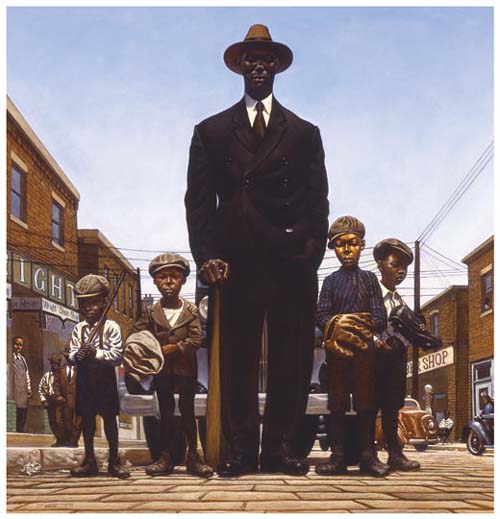
Willie Foster and young fans, Pittsburgh, Pennsylvania, circa 1932
7-Imp: Describe for us the job of a film conceptual artist. How is it similar to, or different than, illustrating a book?
Kadir: A conceptual artist for a film creates images from the film’s story line with the intention of establishing the look, feel, and mood. He creates the look of characters and their environments. It’s similar to creating artwork for books, but the main difference is that a vast majority of conceptual artwork for film is never used. The opposite is true for book artwork.
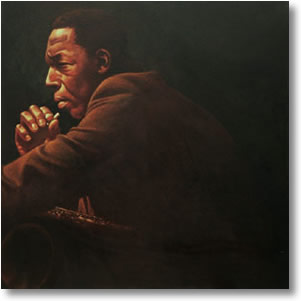 7-Imp: Your work frequently depicts living or historical heroes: African American activists, musicians, athletes, etc. {pictured here is Trane (Coltrane), rendered in oil.} How does this affect your approach? Does an obligation for accuracy ever conflict with a desire to be imaginative or fanciful? Does the reverence in which these figures are held ever intimidate you when you want to show a wart or two?
7-Imp: Your work frequently depicts living or historical heroes: African American activists, musicians, athletes, etc. {pictured here is Trane (Coltrane), rendered in oil.} How does this affect your approach? Does an obligation for accuracy ever conflict with a desire to be imaginative or fanciful? Does the reverence in which these figures are held ever intimidate you when you want to show a wart or two?
Kadir: I am very adamant about depicting historical subjects accurately. The challenge is in finding a new way to present the subject. That’s the fun of it for me.
 7-Imp: We Are the Ship is the first book you’ve written as well as illustrated {pictured here is the book’s title page}. What compelled you to tell this story? What sort of research did you do?
7-Imp: We Are the Ship is the first book you’ve written as well as illustrated {pictured here is the book’s title page}. What compelled you to tell this story? What sort of research did you do?
Kadir: I got hooked on the history of the Negro Leagues while I was still a student at Pratt Institute in the mid 1990s. I was commissioned to do a painting on the NL but didn’t know much—if anything—about it. So in doing my research I stumbled upon the Ken Burns documentary, Baseball, which aired on PBS. Through watching the documentary, I was introduced to the former player and manager Buck O’Neil, who told the story of the Negro Leagues in such a charming way that I fell in love with the history (and Buck) and was inspired to learn more. I began creating several paintings, and it grew exponentially from there. As I continued to paint, I would realize that I had to tell this story in a book, and I knew I had to write it myself.
I read several books on the Negro Leagues, interviewed former Negro League players, watched documentaries, and bought a replica Negro League uniform, posing as every figure for each painting in the book, with the intention of literally putting myself in the shoes of a Negro League player so I could tell this story in an authentic way.
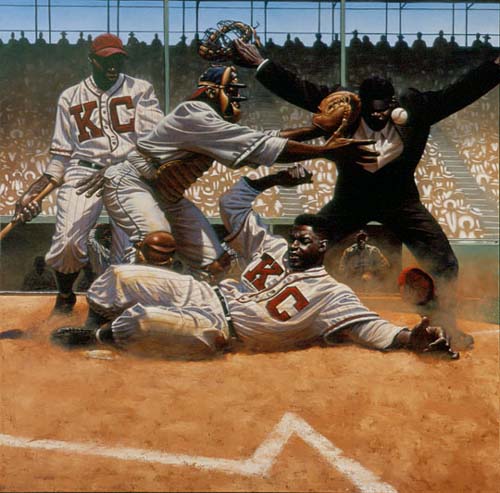
Jackie Robinson steals home past Cleveland Buckeye catcher, Quincy Trouppe
7-Imp: How do your children feel about your books? Do they have favorites?
Kadir: My children aren’t especially interested in my books. I have two girls and a brand new baby boy (who isn’t reading yet). My girls are a bit older and more into chapter books. My youngest daughter will indulge me at times by asking me to read her a picture book before she goes to sleep, though she never seems to choose any of my books. But both of my girls are great critics of my work. I always show it to them before I send it off to the publisher.
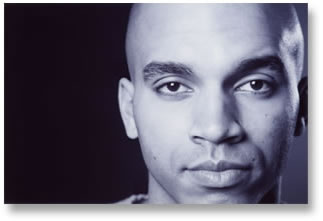 7-Imp: Can you briefly tell us what your school visits are like and how they affect your work as an artist, if at all?
7-Imp: Can you briefly tell us what your school visits are like and how they affect your work as an artist, if at all?
Kadir: Through a PowerPoint demonstration, I show school kids my evolution as an artist, from my drawings of Charlie Brown and Snoopy drawn with pencils and crayons at six years old, to Josh Gibson painted with oils on canvas with the intention of letting them know that everyone has to start somewhere. With hard work, determination, and a desire to improve and have fun, anyone can achieve their dreams. It’s an important lesson for people of all ages.
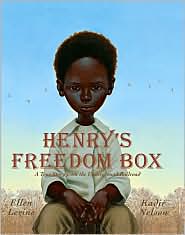
 7-Imp: Is there something out there that you really want to try, but haven’t had the opportunity yet? A story you really want to write or illustrate? A new medium or subject for your art? What’s your personal Mt. Everest?
7-Imp: Is there something out there that you really want to try, but haven’t had the opportunity yet? A story you really want to write or illustrate? A new medium or subject for your art? What’s your personal Mt. Everest?
Kadir: I’d like to try my hand at sculpture and music. I just haven’t made the time for either of them, but I will.
7-Imp: Can you tell us about any new titles/projects you might be working on now?
Kadir: I recently finished a picture book biography of Abe Lincoln called Abe’s Honest Words, written by Doreen Rappaport. It will be published by Hyperion/Disney and is due in the fall. I also finished a book called All God’s Critters written by Bill Staines. It’s a wild rumpus on a broadway stage where all god’s critters sing about their place in life. It will be published by Simon and Schuster and will be due next spring.
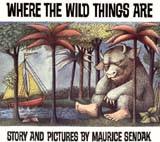 7-Imp: We know this is considered a cliché question, but as book lovers, it interests us: What books or authors and/or illustrators influenced you as an early reader?
7-Imp: We know this is considered a cliché question, but as book lovers, it interests us: What books or authors and/or illustrators influenced you as an early reader?
Kadir: I wasn’t a big reader as a kid. I was more into the artwork in books. But I did have a few favorites outside of the Sunday comics. I loved Sendak’s Where the Wild Things Are most of all.
7-Imp: What’s one thing that most people don’t know about you?
Kadir: I love Scrabble.
7-Imp: If you could have three illustrators or author/illustrators over for coffee or a glass of rich, red wine, whom would you choose?
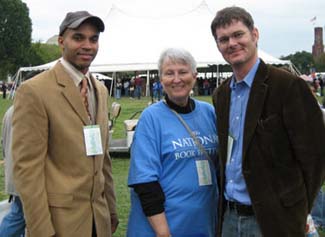 Kadir: Brian Selznick. He’s a riot. Mo Willems, who’s hilarious, Norman Rockwell, and I’ll cheat with one more, N. C. Wyeth.
Kadir: Brian Selznick. He’s a riot. Mo Willems, who’s hilarious, Norman Rockwell, and I’ll cheat with one more, N. C. Wyeth.
{Kadir is pictured here with Mo Willems and Library of Congress reference specialist Maja Keech at the 2006 National Book Festival in Washington, D.C.}
7-Imp: What is your favorite word?
Kadir: “Visceral.”
7-Imp: What is your least favorite word?
Kadir: “Sigh.”
7-Imp: What turns you on creatively, spiritually or emotionally?
Kadir: Passion, quality (or a passion for quality), and truth.
7-Imp: What turns you off?
Kadir: People who are not motivated to improve their selves or their environment.
7-Imp: What sound or noise do you love?
Kadir: The wind in the trees, LOVE it!
7-Imp: What sound or noise do you hate?
Kadir: “Sigh.”
7-Imp: What profession other than your own would you like to attempt?
Kadir: Musician or comedian.
7-Imp: What profession would you not like to do?
Kadir: Anything that is not creative.
7-Imp: If Heaven exists, what would you like to hear God say when you arrive at the Pearly Gates?
Kadir: “Hey, there he is!”
For more online information about Kadir Nelson:
- Kadir’s official web site.
- Official web site for We Are the Ship.
- Video interview of Nelson from Hyperion/Jump at the Sun for We Are the Ship; 2008:
- “Artist Inspired by the Negro Leagues”; Kadir talks with NPR’s Farai Chideya at npr.org; March 12, 2008.
- “The Pride of the Game,” Sports Illustrated feature of We Are the Ship by Phil Taylor; online art gallery from book here; March 5, 2008.
- Feature at the web site of Major League Baseball, written by Thor Nystrom; February 18, 2008.
- “A`Ship’-full of lessons with Kadir Nelson’s children’s book on Negro Leagues” by Tom Hoffarth (includes a brief Q & A); Daily News (Los Angeles); February 17, 2008.
- “Baseball Was America’s Pastime, But Only Whites Could Play”; Q & A by Jennifer M. Brown at School Library Journal; February 14, 2008.
- “Illustrated Book Chronicles Negro League Pioneers” (includes an excerpt from the book); All Things Considered, NPR.org; January 29, 2008.
- “A video interview with Kadir Nelson” (transcript here); Reading Rockets; 2008.
- “Children’s Bookshelf Talks with Kadir Nelson”; Publishers Weekly; December 20, 2007.
- Audio interview (.mp3 file) by Sabrina Weissler at Childrensbookradio.com (download at this site — see #28); December 3, 2007.
- “Meet Kadir Nelson” by Bonnie O’Brian; California Readers Online; 2007.
- Interview by Cynthia Leitich-Smith at Cynsations; October 18, 2006.
- “Illustrator Kadir Nelson speaks at the 2006 National Book Festival”; The Library of Congress Webcasts; September 30, 2006.
- BookPage interview: “Meet Kadir Nelson”; 2005.
- “San Diego artist wins national award” by Karen Rostodha; Full Focus; KPBS San Diego; June 21, 2005.
- Feature at the Black Art Depot; 2004.
- “Shades of Greatness, Kadir Nelson” by Tom Shanahan, San Diego Hall of Champions Sports Museum; August 21, 2004.
- “GRITS Kidz Book Club Chats with illustrator, Kadir Nelson!”; G.R.I.T.S. Kidz Book Club; February 2004.
- “Rising Star: Kadir Nelson, illustrator”; The Bulletin of the Center for Children’s Books; 2000.
- Feature at The Collection Shop; Undated.
- Kadir Nelson Biography at http://biography.jrank.org; Undated.
For more online information about Kadir, visit this page at his site and this page at the site for We Are the Ship.

You guys continue to impress the heck out of me. This is awesome – he is awesome. What a great job you have done here; what a wonderful wonderful job.
Now I’m off to finally buy this book!!
Okay, I get geek-out points for admitting that I got goosebumps just looking at his artwork — I ADORE the little girl Ellington. I was just going to get We Are the Ship for my Dad for Father’s Day, but haven’t I been very, very good? I think I need a couple of books, too…
THIS, people, has been WORTH the wait. THANK YOU SO MUCH.
Wowza – what a great post and interview. I so adored this book (as you already know from my review earlier this year), but it still blows me away every time I see the art.
Of course, I was already salivating before I clicked on the cut because I recognized Kadir Nelson, and he’s such a talent. (And cute, too – it must be said!)
Thanks, you all.
Kelly, I loved your review and linked to it when I covered the book last week. But I’ll link to it again here so that other people, who perhaps stumble upon these comments, might see it, too. (And I LOVE the posts over at I.N.K.!). Didn’t you also review it again at Writing and Ruminating? I’ll have to look that up. I always like your detailed reviews.
You and TadMack had the privilege of hearing him speak last year, right?
Colleen and TadMack, I also need to go get my own copy already. I have a library copy, and when it’s time to turn it in, I’ll probably be grumpy about it and they’ll have to pry it from my hands, so I need to just go get my own copy to keep forever and ever and ever infinity.
Eisha and Jules,
Thanks for this fine interview with one truly talented artist and picture book creator. His passion for his work shines through in his books.
Thanks so much for this fantabulous interview. I have so much respect and admiration for Kadir’s work — how is it humanly possible to create such beauty? Yes, awesome enough to weep over.
Terrific job, guys.
Truly good stuff. I saw this book a few weeks back and turned each page with my mouth wide open. His work is so great. “Big Jabe” is one of my favorite books of all time. It made(and continues to make me) want to run to my studio and paint.
Thanks for the great feature! His work has had a huge influence on my own. Loved the fact that he chose Rockwell as one he’d pick to have a drink with. I’ve always considered Nelson to be our “modern day Rockwell”.
You guys have a direct link to dream interviewees, or what????
Jules, I just read the interview and checked out the book. You are right he is wonderful. The cover of Moses is one of my favorites all year. I was also excited to see that he picked a family member as one of his favorite illustrators. N.C. Wyeth. Sherry
I heard him speak at an SCBWI conference, and he showed slide after slide of his fabulous artwork. I was mesmerized.
His artwork is beautiful! Thanks for a great interview.
Awww, shucks.
I was ready to turn in for the night, but even this fantastic interview with the man got me a bit misty eyed. Cuz guess what, y’all??? This week, this very week, the book We Are the Ship is doing some incredible, almost magical work out here in Utah.
Mr. Nelson, if you’re out there, I really want to tell you about this kid I love. He lives in the homeless shelter in Salt Lake City. He has a really rough home life. Dad’s in jail. Mom’s on drugs. This year, by some amazing graceful miracle, this ten-year-old has learned to LOVE books. I think reading has become his refuge. First, he read and took very good care of my precious, signed copy of Malcolm X, By Any Means Necessary, by Walter Dean Myers. It took him five minutes to read each page back in September, but he was so determined to read that book. And finishing it took him about six weeks, but he read every page. In December he discovered Darren Shan and has since read every single Cirque Du Freak and Demonata book.
Last week I handed him We Are the Ship and he carries it around school and back and forth to the shelter like it’s a million dollar prize. He comes up and shows me the illustrations and stories and can barely contain his admiration for those players. His is a fierce admiration that is settling into the deep roots of his tender little soul.
I can only speculate here, but this is what I believe: I believe those stories, of determination and triumph in the face of horrible adversity and discrimination will give this kid more important wells of strength than any other forms of “help” that I can imagine.
Teaching kids with such steep slopes all around them can sometimes be very difficult work, but with books like yours and children like this one, I consider it a great privilege to be working out in the trenches.
From the very bottom of my heart: THANK YOU!!!
Fabulous interview. I LOVE this man’s work. Can’t get enough of it! I have to smile at his description of his daughter’s attitude – ain’t it the way. My own little boys love his books just like I do.
Terrific interview. I stumbled across We Are the Ship last week and Kadir’s art brought tears to my eyes. My dad is going to love this book– thanks for the gorgeous, meaningful birthday present! I look forward to seeing what else Kadir gets up to (hooray for sculpting!)
[…] Seven Impossible Things Before Breakfast […]
It’s a shame Kadir’s least-favorite sound is “Sigh,” because, um, weren’t a lot of us thinking that when we saw his picture?
Just saying.
I totally agree with you, Robin! 🙂
Thanks, J and E, for this fab interview. TadMack and I got to see his SCBWI presentation last summer and that was amazing. His artwork is so striking and he’s really talented.
I want a 28X28 of Jackie Steals Home. My birthday is August Fifth.
[…] G.: As an early reader, it’s hard to say, but lately I have been into Shaun Tan, Adam Rex, Kadir Neslon — just to name a […]
[…] year—and I mean to tell you that the art work in this one will also blow. you. away. This is Kadir Nelson collaging African textiles with oil paintings, and it’s one of the most beautiful picture […]
[…] can I add to the discussion about this already much-lauded book, Kadir Nelson’s Heart and Soul: The Story of America and African […]
[…] the two Silver Medal winners, Kadir Nelson and Lane Smith, have previously visited 7-Imp — here and here, […]
[…] Mark Teague, Kadir Nelson, Tom […]
[…] Today at Kirkus, I write about Schwartz & Wade Books’ new I Have a Dream with the exquisite oil paintings of Kadir Nelson. […]
[…] Today at Kirkus, I write about Schwartz & Wade Books’ new I Have a Dream with the exquisite oil paintings of Kadir Nelson. […]
[…] leader.Nelson snuck a message to the people: ‘I will return.’”– Spread from Kadir Nelson’s Nelson Mandela(Click to enlarge spread, sans […]
Nice article
[…] over at Kirkus, I wrote about Kadir Nelson’s newest book, Baby […]
[…] at 7-Imp, I’ve got some spreads (sans text) from Kadir Nelson’s Baby Bear, which I wrote about last […]
[…] Jerry Pinkney’s amazing drawings full of imagination and color; Kadir Nelson’s stylized, powerful expression; Adam Rex’s edgy, whimsical characters; and Ezra Jack […]
[…] blogs, trying to get caught up! This past week I got a kick out of the 7-Imps’ interview with illustrator Kadir Nelson, who TadMack and I got to see at the SCBWI summer conference last year. Gorgeous man, gorgeous […]
[…] Seven Impossible Interviews Before Breakfast: Kadir Nelson http://blaine.org/sevenimpossiblethings/?p=1179 […]